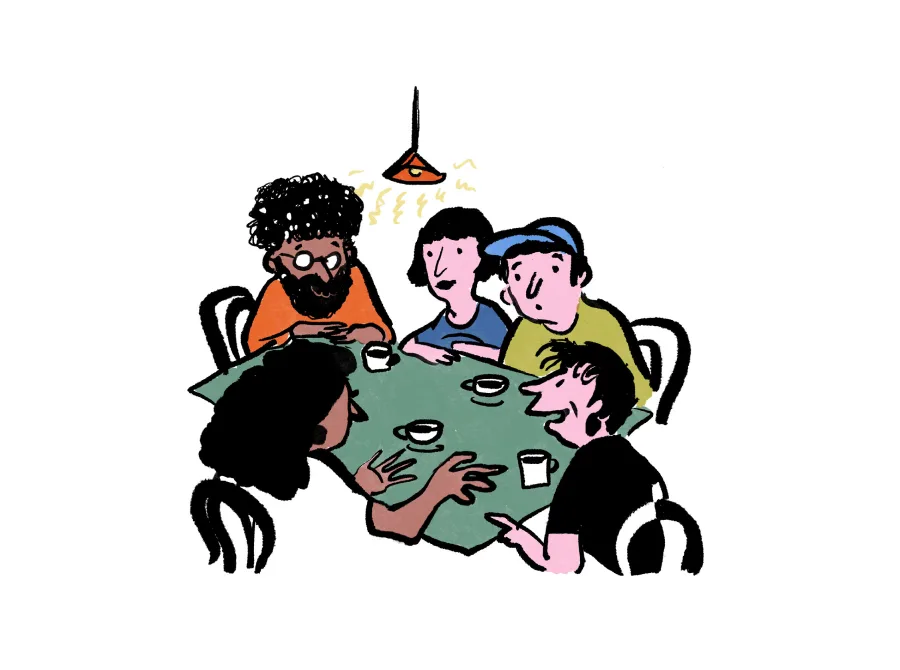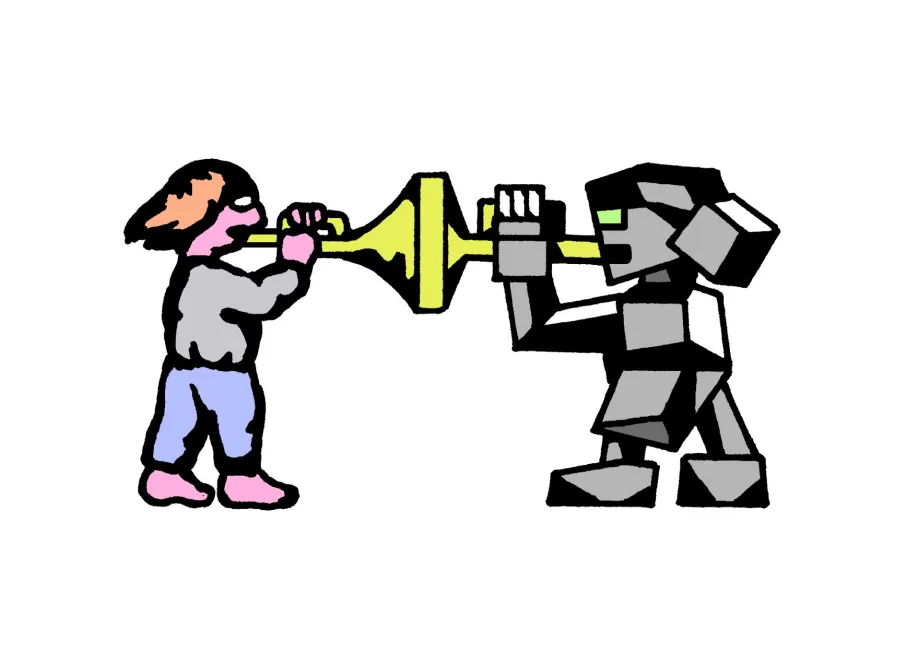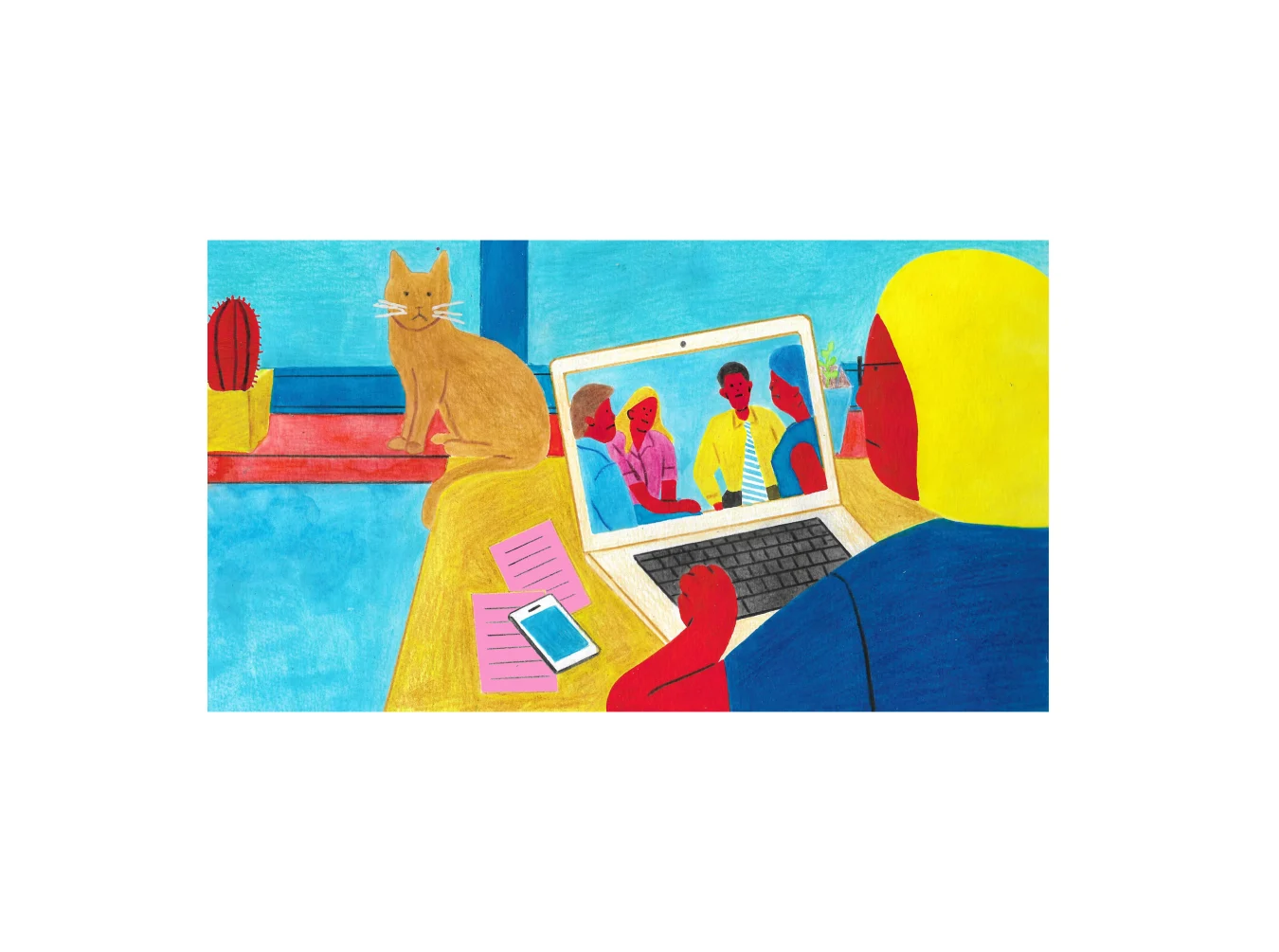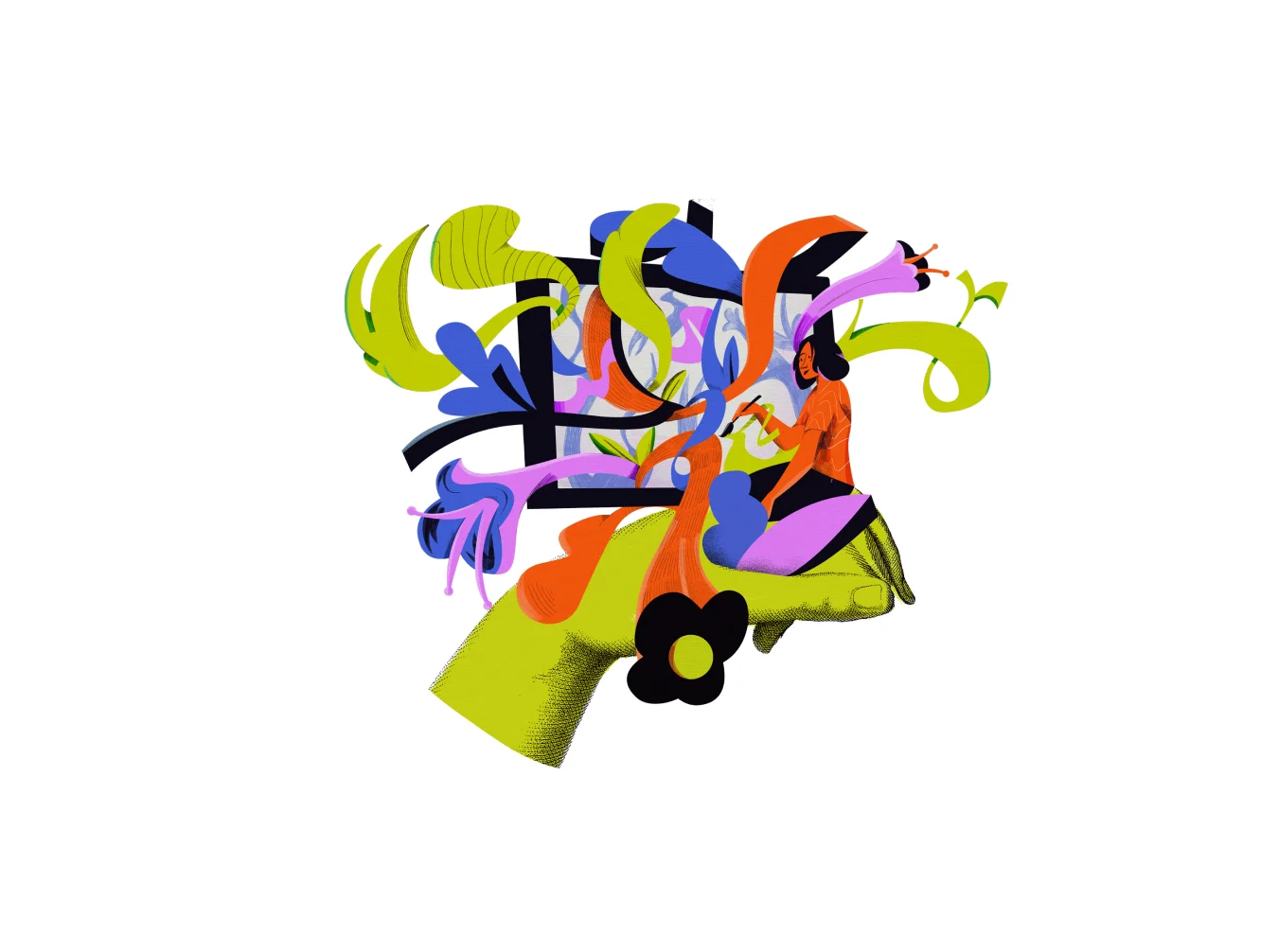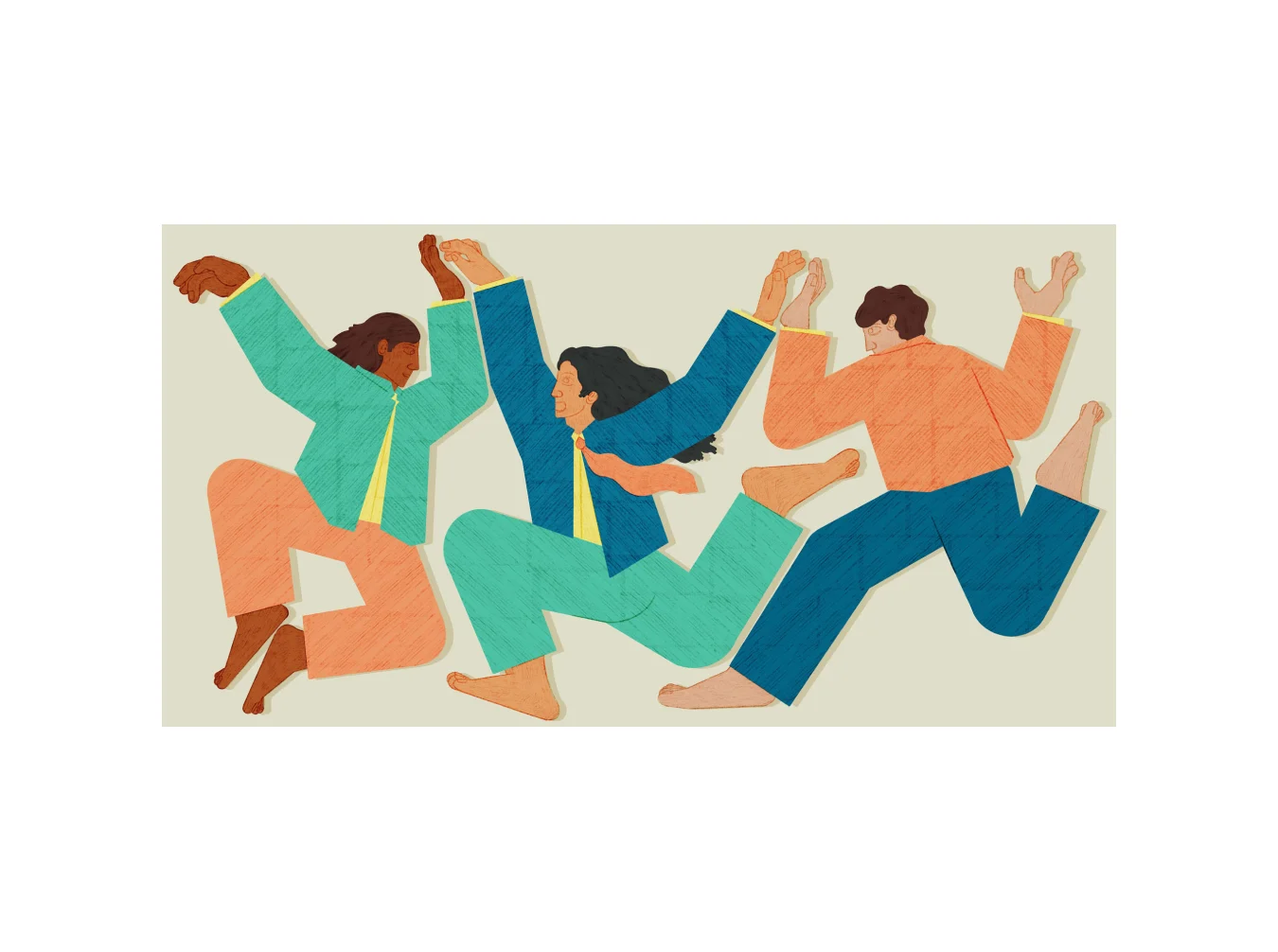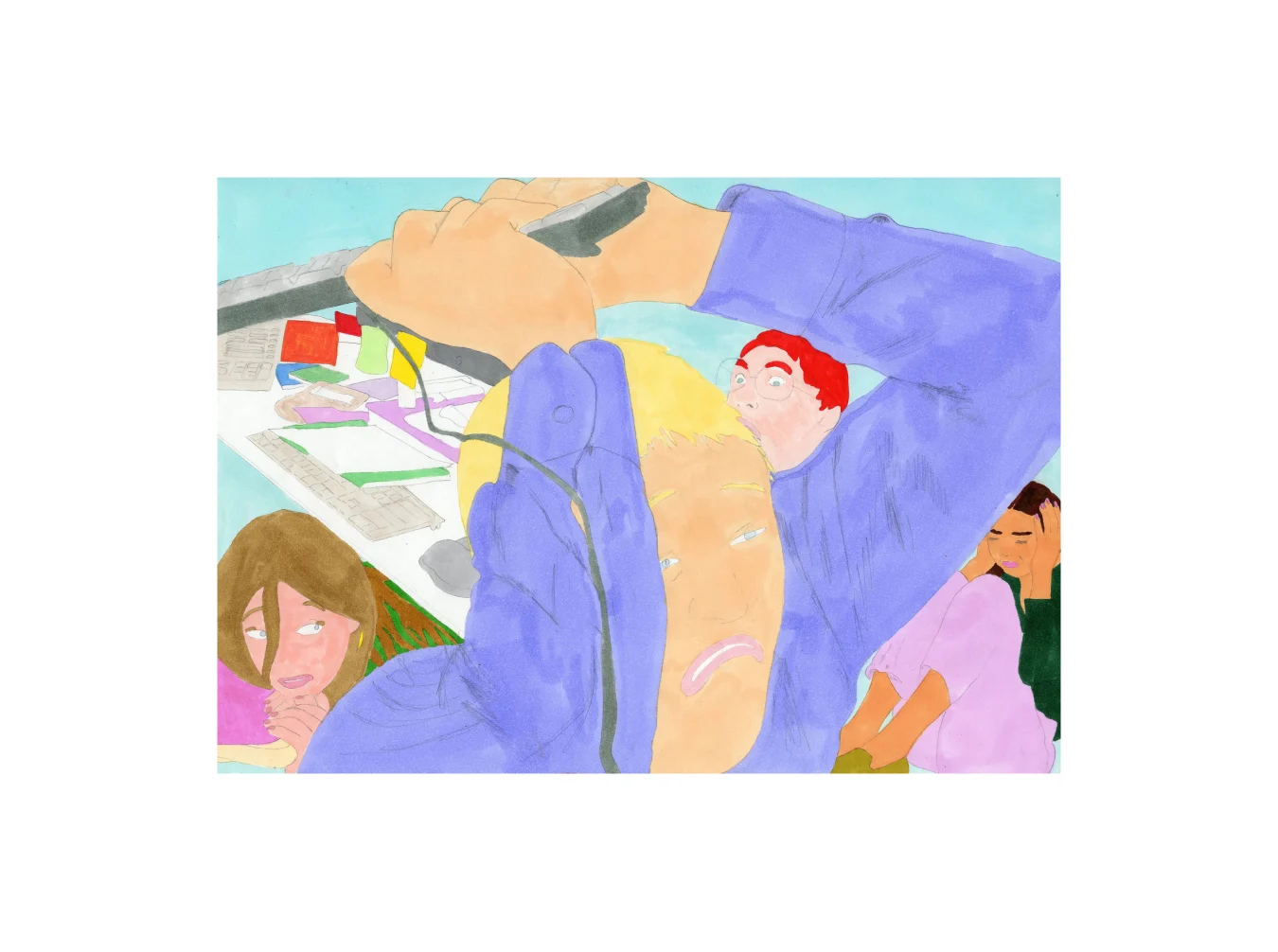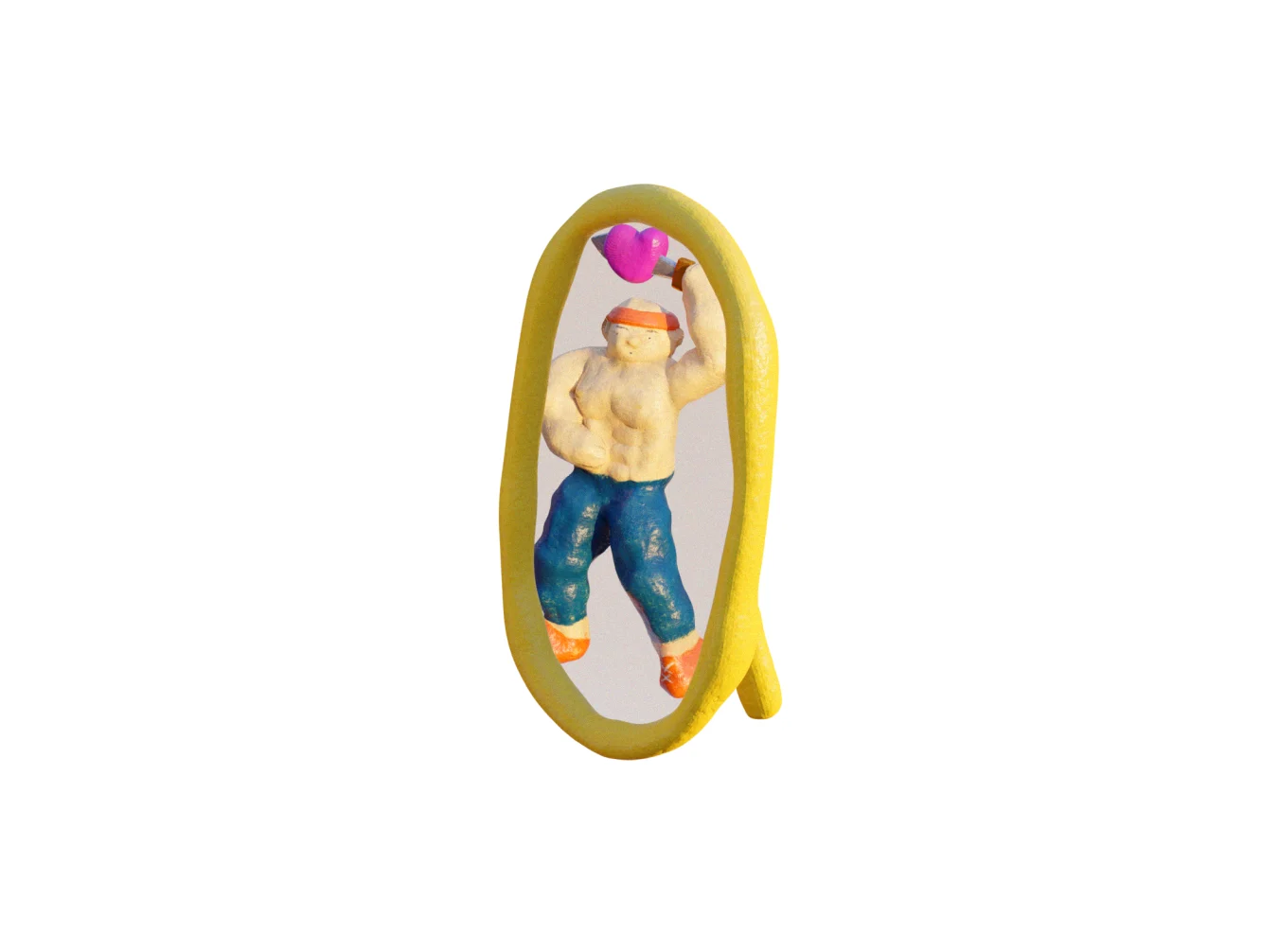

For many users, Instagram is a way to open up one’s personal life to the world. But for more and more creatives, it's first and foremost a business tool, having usurped the portfolio website as the most effective way to showcase work and attract new clients. Here, James Cartwright speaks to a few creatives who have built their careers on the platform to find out how it’s done.
Illustrations by Ari Liloan.
When I left university back in 2011, the tutors on my illustration degree were all insistent that I'd need a portfolio site to make any kind of career for myself. But it only took a couple of years for that advice to become redundant. By the time I'd started freelancing, Tumblr was already a hotbed of strange visual subcultures and amazing creative talent, and this more social and reciprocal way of discovering and sharing creative work superseded the portfolio site for good—here’s my eight-year-old website if you need proof that a website ain’t all that.
Later, when instagram blossomed from a place to share digitally degraded holiday snaps into something more akin to the platform it is today, it quickly became clear that people making visual work for a living could use it much more successfully than Tumblr to promote themselves and build real communities around their work and interests.
But the landscape is more complex now than it was then, and Instagram is a much more commercial platform than it was a decade ago, which means the way that creators and brands are using it has changed.

Rosanna Morris graduated from an illustration degree at University of the Arts a year after I did, and over the next few years built up a portfolio of stunning linocut illustrations for a varied list of socially conscious clients. Like me, she'd been told that a portfolio site was a must, but it wasn't until she started sharing her work on instagram that her freelance career really started to take off.
"I've been on Instagram for well over six years now," she says. "It was just so much more visually attractive than anything else available to me, and it felt like I could finally connect with people on the same wavelength." Now she has over 35,000 followers who reliably snap up her original work and boost her profile, which in turn feeds into a regular stream of freelance commissions.
Unlike Morris, fine artist Felicia Chiao had been a devotee of Tumblr before switching to Instagram in 2015, initially "just to keep up socially. But I'm a very private person," she says, "and don't love sharing my day-to-day, so I ended up just posting art."
Felicia’s regular posts of foul-mouthed birds, intricate architectural drawings and anxious androgynous characters led to her amassing about 60,000 followers almost by accident. At the time she was working as an industrial designer for IDEO by day and tinkering with her art on evenings and weekends. And that suited her just fine.

I could turn down bad projects because I didn’t need the money, and I was able to draw whatever I wanted because it didn’t matter.
"I never wanted to do art full-time," she says. "I was happy as an industrial designer." But putting out work in this way gave her the freedom to explore her artistic practice without the pressure of making a living from it. "It allowed me to only do the art I wanted to do on the side. I could turn down bad projects because I didn’t need the money, and I was able to draw whatever I wanted because it didn’t matter. Because of this, I was able to put out a steady stream of good work."
When her day job "started going south" at the end of 2021, she was able to seamlessly leap from one career into the next, "because I had this art career that I'd accidentally built with galleries that had picked me up and big clients coming my way."
While Chiao and Morris have always seemed like the perfect fit to be Instagram success stories (visual creatives producing work that's instantly at home on the platform) the last few years have seen a dramatic rise in the number of users in fields that aren't inherently visual using its storytelling capabilities in new and exciting ways. Now chefs rub shoulders with craftspeople, fine artists with extreme sports personalities, and the platform is richer for it. There are still the pseudo-celebrity “influencers” out there, but they aren’t as prevalent as they once were.
In order for that shift to happen, Instagram had to go through a bit of a metamorphosis, one driven by rising user engagement and evaporating marketing budgets. Before the Covid-19 lockdown, marketers were spending big money on “influencers” to promote products that nobody really wanted. When covid happened, these budgets disappeared overnight, but millions more people took to the platform to kill their spare time. In 2020, the average American social media user increased their social media usage by 16%, spending their government-imposed time at home looking for connections online. At the same time paid ads decreased by an estimated 35%.

This meant a big increase in followers and opportunities for folks like Morris and Chiao (whose following has increased to 523,000 in the last two years) but also opened up the world of content creation to people like pastry chef and television presenter Ravneet Gill, who until that point had only flirted with instagram on the side.
Gill hadn't started using instagram with any clear direction “other than as a portfolio for my work and a way to document what I was doing at the time. My first post was a picture of my shoes with the Tube floor in the background. I didn't know what I was doing.” The growth of her following was initially slow and organic, but things picked up pace over lockdown, which happened to coincide with the release of her first book, “The Pastry Chef's Guide”. Suddenly people were stuck at home looking for baking inspiration and Ravneet was exactly the person they needed to give it to them.
Now her following stands at an impressive 130,000 and, unlike in the early years, she now knows exactly what she's doing with the platform — she even employs a small team to keep on top of it all. Monday morning begins with posting therapeutic videos of digging into an unctuous soufflé, pouring cream over a chocolate cake or slicing through a tart. From here it's daily posting until a final recap of her week on Sunday evenings where she picks out the best bits of who she's seen and what she's eaten. For a chef, there's surprisingly few recipes, but that's intentional: “my feed is about enjoyment, eating, being yourself and having fun,” she says.
In the same way, Rosanna Morris’ social media presence is sometimes only superficially about her work. Often the content is more concerned with her home and personal life, her process, or behind-the-scenes shots of her studio space. Her partner and three kids feature regularly. It’s not a balance that she’s always comfortable with, but the personal and honest side of the medium is also what attracts her to it.
“It’s possible I share too much,” she says. “I do have friends and family that have questioned it in the past, especially showing the kids—but the truth is I get so much from the accounts I follow that are open and honest,” and given all the positive feedback from her followers, they must feel the same way about her.
Felicia Chiao too, balances personal and professional content on her Instagram account. While the imagery she posts always focuses on her art—there are never photos or herself—the captions she publishes are often frank about her personal life and state of mind.
“I’ve struggled with mental health for as long as I can remember and my art was my number one way to cope with it,” she says. “Naturally it leaked into other aspects of my online persona.”

Now she gets “lovely messages about how my work has helped others with their mental health, how they’re able to use my work to communicate how they feel, and how it makes them feel understood and less alone. I just got a comment from someone who said my art helped their young kid deal with their anxiety and how it has helped them bond by looking at my work together, so that’s pretty magical.”
For someone who claims to make art for “purely selfish reasons” this kind of emotional response from fans is its own reward. “Perhaps I’m not so alone in my experiences after all,” Morris says.
If sharing so much of your personal life seems like a high price to pay for a successful instagram account, it does come with an awful lot of benefits. While Chiao, Gill and Morris all believe they’d be able to maintain their careers without Instagram these days, they have all enjoyed major success as a result of their social media accounts. Chiao was picked up by multiple galleries and publishing houses, Morris was able to make extra revenue from Patreon as a result of her growing following, and most of her commercial work now comes through Instagram, and Gill was invited to replace Pru Leith as a judge on British TV show “Junior Bake-Off”. “It has opened up massive opportunities and I feel very grateful for that,” she says.
Above all it’s the creative and financial freedom that keeps them posting. “Whether it’s valid or not, followers give a lot of credibility,” says Chiao. “On top of the money I receive from followers buying my works and merchandise, I have been able to charge higher prices for originals and projects. This gives me the freedom to not only pick projects I want to do, but also gives me the financial stability to take breaks and live a less stressful life.”
On the other hand, a large following means having increased responsibility towards a whole community of people that come to you for content. “It’s a bit scary and a little bit of a burden,” says Chiao. “I feel like it gives me more responsibility to not ruin half a million people’s day.”
To combat this, she is strict about her tone of voice and the content she posts. “I have to be more sensitive about what I post or talk about. I’ve really reeled it in as far as my online attitude goes. I maintain a pretty neutral voice most of the time.”
Gill agrees. “I’m big on boundaries,” she says. “There are quite a few big things in my life that I have chosen to keep out of social media, and that's largely due to wanting to keep somethings to myself and out of respect to others.”
Now chefs rub shoulders with craftspeople, fine artists with extreme sports personalities, and the platform is richer for it.
Inevitably, followers arouse the interests of brands, which depending on your school of thought can be either a blessing or a curse. Once you’ve accrued enough of a following to be seen as an “influencer” in the eyes of a like-minded brand, paid partnerships could add another revenue stream to your career… unless you’re Chiao. “No no no, gross,” she says of brand partnerships. “I get a lot of requests but I don’t like advertising and I refuse to post anything I don’t want. I will only share stuff that is directly related to me and my own work.”
But very few are this absolute about partnering with brands. While Morris’ following is somewhat smaller than that of Gill or Chiao, she receives regular offers to post sponsored content on her platforms, although “I haven’t gone with it yet as it feels false. I’ll accept free things and, if I like them, I'll post about it and be clear that they were gifted. But the sponsored ad thing isn't really up my street yet. It feels a step too far and just a bit icky.”
For Gill, sponsored content makes up a regular, if not significant, part of her social media presence and is an important revenue stream—partnership requests are now referred directly to her agent. Nevertheless, she’s strict about what she will and won’t consent to. There are two questions she asks when deciding whether to work with a brand. “Do I get to give back through the content, and does it feel authentic to me? That's been really important from the get go because it means I haven't diminished the work I've done in building an audience by feeding them content they don't want to see. Brands that want to work with me usually want to work around what I'm currently doing, which means that each partnership is meaningful and one that I am genuinely happy to shout about.”
So while it might sound slightly trite to say it, authenticity is the watchword when building a successful Instagram account. And regular posting. Oh and reels, you have to post reels now…
You get the idea. It takes time, and a lot of hard work. But it’s worth it. Don’t take my word for it though, just ask Chiao: “Basically everything I’ve ever done has been because someone found my Instagram.





